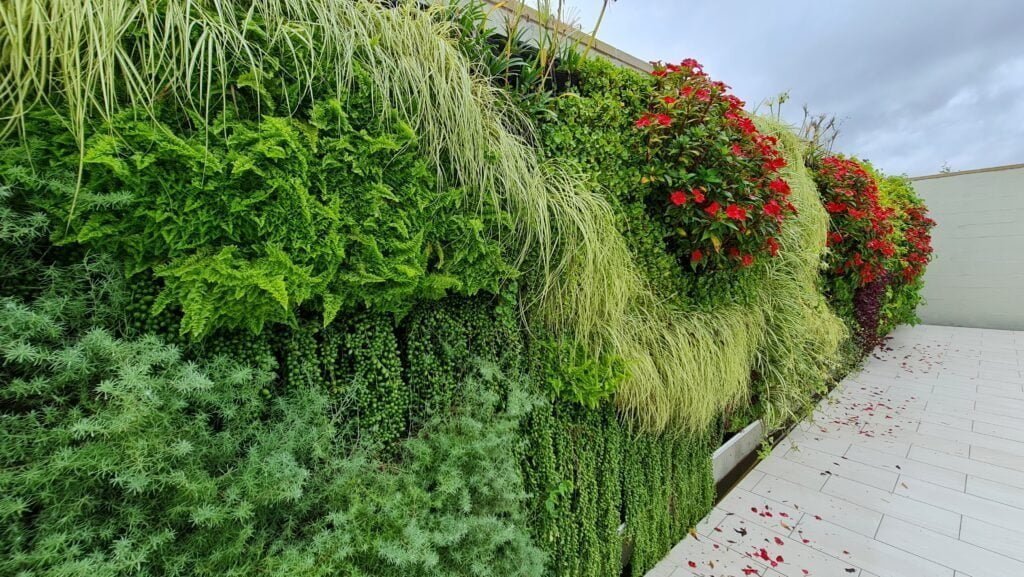Posted by Ben Gooden on Wed, Mar 30, 2022 @ 11:23 PM
Why Modern Day Living needs more Biophilic Design
As leaders in urban landscape solutions, the concept of biophilic design has been pioneered by Citygreen for almost two decades. Our mantra of transforming grey spaces into green, by incorporating nature into cityscapes, goes to the heart of what biophilic design is all about.
The term biophilia was first used by the pioneering naturalist and biologist Edward Wilson in 1984 when he hypothesised that humans have an “innate tendency to focus on life and lifelike processes.”
This tendency that Wilson speaks to, refers to the bond and deep sense of familiarity that humans and nature share. As a biologist, Wilson viewed life through an ecological lens, comparing lifelike processes to “organisms in an ecosystem.”
He believed that for societies to be functional, their surroundings must be akin to the natural environment that we were evolved in. In the man-made built environments, where most of the world’s population lives today, this sense of connection between nature and everyday human experiences has been slowly eroding.
During the COVID-19 global pandemic, lockdowns forced many of us to live in our neighbourhoods and home on a more permanent basis, which for a lot of people highlighted the lack of, and thus need for more innovative greenspaces.
Generally, the term greenspace invokes images of outdoor parks benches and beautifully manicured gardens, which is too simplistic in terms of 21st-century living. The standard approach in the past for town planners was to allocate a certain amount of open outdoor public space for conventional use, such as walking the dog or picnicking.
Yet today, with modern living requirements and conditions, the inter-relationship between greenspaces and greenspaces users has changed. As individuals, we are now spending more time inside buildings of all kinds, than we ever have before. Therefore, when we think of green spaces we should be contemplating indoor communal spaces like foyers in apartment buildings, food courts, and large shopping centres.
An example of a biophilic design that meets the needs of modern-day greenspace users is green walls, also termed living walls or vertical gardens. Such walls are becoming more popular, as they are able to convert underutilised areas into aesthetically appealing green spaces, by merging the natural and the built environments together.

Using straight walls and rights angles to recreate the scenic irregularities of the natural environment, has been a design goal for many sustainable companies including Citygreen. Green walls that incorporate a wide range of diverse plant species are able to artificially reinvent ecosystems, and can then bring the natural world closer to individuals, whether that be in a bustling inner-city workplace or residential apartment block.
Watch our Webinar on green living walls here.
Citygreen’s™ Living Wall system
Citygreen’s™ Living Wall system is a leading example of a modern biophilic design. Manufactured by the pioneering brand in advanced living wall products, Terapia Urbana in Spain, the Living Wall embodies nearly 15 years of research, development and product testing.
The system can be used outdoors, but indoor walls are by far the easiest, as the microclimate is more predictable, with the installation of artificial lighting, and automatic watering and fertilisation systems. Compared to other green spaces, the water usage for living walls like Citygreen’s™ Living Wall system is low, as it typically requires two litres per square metre per day to irrigate the wall.
The three features that make the system unique, and why it is able to stand out amongst other living wall designs, is firstly the fact that the wall, where the system will be mounted, will need no additional waterproofing. Secondly, the system is the lightest system on the market, weighing only 35kg per square meter fully planted and saturated.
Thirdly, the design is made up of a three-layer panel system that all links together, allowing the roots of the plants to be both protected, and have the ability to migrate freely, enabling almost unlimited root volume for the plants to grow in.
Related: How To Create Sustainable Spaces with Green Living Walls

The design is available in nine standard panel sizes; however, it can also be engineered to fit bespoke sizes for unique projects. The system is also designed for quick and efficient installation for large scale commercial projects or smaller residential projects, with minimum disruption.
With urbanisation and residential density increasing in our modern-day societies, it is imperative that more cities and buildings be designed and planned in a sustainable way that allows individuals and communities to have equitable exposure to the natural environment.
Citygreen’s™ Living Wall system showcases a leading example of a creative sustainable and flexible design that can be used within challenging and ever-evolving modern-day greenspaces.
Learn more – Book Your Free Online Workshop
References: Edward O. Wilson. Biophilia. Harvard University Press. Cambridge, MA, and London, 1984.

